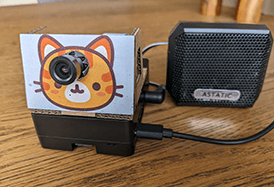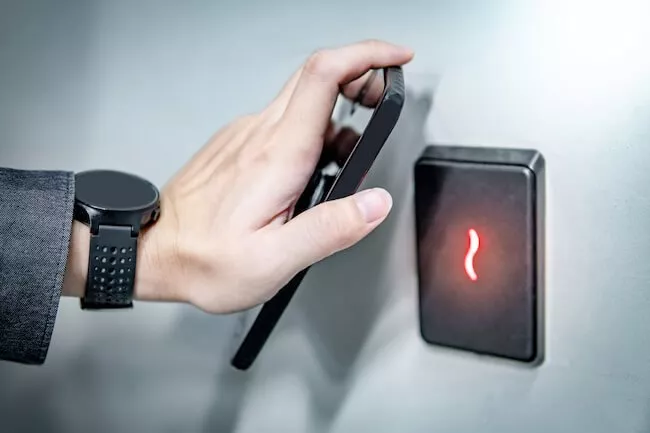Imagine a remote surveillance camera system that operates autonomously yet leverages human expertise to bring indisputable evidence to courtrooms. Thanks to a collaboration with our esteemed client Creative Solutions Investigative Services (CSIS), innovative intel surveillance is now a reality.
On a recent episode of the Revenue Fuel Podcast, Dan Coleman, CEO of CSIS, shared insights into his tech-driven approach revolutionizing private investigations. In the episode, Coleman explained how his private investigation firm worked with us to create a proprietary system for transmitting, storing and analyzing footage relevant to investigations from remote surveillance cameras.
Throughout the podcast, Coleman highlights how Cardinal Peak’s innovative approach to product engineering helped CSIS develop its uncrewed surveillance solution and create a new category: intel surveillance.
Finding a partner like Cardinal Peak gives you the confidence to know you’re on the right path. Sometimes I have to pinch myself, saying, ‘Wow! These guys really understand this crazy thing I have in my head and are making it happen.
The Problems with Designing Your Own Product Category
Intel surveillance isn’t just sticking cameras in trees and hoping for the best — it involves crafting a narrative that can stand up in court.
Surveillance will always demand maintaining a consistent view of locations while remaining covert. But long gone are the days when investigations relied solely on boots-on-the-ground tactics, with a person hiding and waiting to document certain activities with photographic or video evidence. That time-consuming process involves significant — and expensive — downtime.
Consequently, Coleman and CSIS considered replacing human investigators with a covert camera solution. Unfortunately, like many professional investigative services firms, CSIS faced challenges with existing private investigator surveillance equipment. Many so-called remote surveillance solutions failed to truly meet the needs of agencies like CSIS — covert deployment capabilities, consistent remote monitoring and intelligent data management — hindering the ability to keep pace with the evolving landscape of modern investigations.
Key challenges included:
- The need for covert, remote deployment without dedicated personnel monitoring.
- Power and connectivity to transmit important images.
- Limited storage capacity.
- Video resolution and quality, especially in low-light conditions.
Recognizing the need for a more advanced solution, CSIS sought a partnership with Cardinal Peak to rewrite the rules of surveillance by developing a proprietary camera solution that captures specific footage essential to investigations without the cost of a field investigator.
Revolutionizing Remote Investigation Surveillance with Cardinal Peak and Creative Solutions
A partnership was necessary to augment the CSIS team’s significant investigative, law enforcement, intelligence and data analysis experience with the mechanical, electrical and software engineering expertise necessary to prototype CSIS’s remote surveillance camera solution.
What initially began as an adapted trail camera tough enough to brave the elements evolved into a comprehensive intel surveillance system smart enough to communicate video data from the camera via LTE to in-house analysts for investigation. Even better, the solution integrates CSIS’s proprietary processes — built on decades of real-world investigation and litigation expertise and more than 4,000 uncrewed surveillance deployments — to streamline surveillance and obtain valuable evidence and intelligence.
Throughout the project, the Cardinal Peak and CSIS teams collaborated to create a complete remote camera system, including:
- Remote accessibility
- Massive pipelines for data and power
- Uninterrupted operation
- High-resolution data delivery
- Computer vision AI to automatically identify and filter relevant footage
- Cloud-based storage with virtually unlimited capacity
- Mobile app for field investigators to remotely control cameras when nearby
Cardinal Peak’s engineering team overcame numerous design and development hurdles, from reworking outdated manufacturer eval boards to optimizing battery life and networking performance to enabling remote accessibility. One challenge — in addition to the covert nature of the camera and blending its integrated enclosures into the environment — was balancing the file size and the resolution along with the camera’s processing and battery expenditure.
With our expertise, the first-of-its-kind CSIS solution focuses on areas of interest (doors, streets, intersections, etc.) and marks interesting events as images, so that the in-house investigators don’t have to parse through thousands of pictures, focusing instead on the 50-100 images flagged by the system as attention-worthy.
Part of our work is not to take a design and make it happen — it’s looking at where the problems exist and making appropriate changes.
From initial discussions to system deployment, we collaborated with Coleman and the Creative Solutions team to address challenges and ensure seamless integration. Regular communication and feedback loops were established early in the development process to refine the system according to CSIS’s specific needs.
Key innovations included secure cloud upload of footage for seamless remote monitoring, AI-based filtering to dramatically reduce time spent reviewing footage and balancing power management and processing requirements to enable long battery life and high enough image resolution.
Building a Results-Driven Remote Surveillance Camera Solution
Ultimately, CSIS’s tech-driven investigation method is about more than just the hardware — it’s about an intel surveillance output that’s faster and more cost-effective.
While the new remote surveillance camera system just launched, CSIS anticipates outstanding results:
Surveillance Capabilities
CSIS expects a quantum leap in surveillance capabilities, with investigators remotely accessing near real-time clips and responding dynamically to make their case in hours.
Efficiency Gains
Our software helps filter out irrelevant data, enabling investigators to focus on pertinent information and substantially reduce the time required to review footage, tackling more cases per investigator each day.
Data Security
The proprietary methods for transmitting and storing images from point to point bolster data security. CSIS now operates with increased confidence in handling sensitive information and video data.
80% Profit Boost
By optimizing efficiency, reducing operational costs and empowering CSIS’s specialized investigative team to focus on what matters most, the firm already experienced an unparalleled 80% profit increase.
Getting the images come in automatically — with the software selecting the relevant footage for investigators to review — is a huge win for the private investigation industry.
Together, Cardinal Peak and CSIS are building the future of remote surveillance — one in which the evidence the CSIS solution delivers is properly formatted, admissible in court and believable beyond a reasonable doubt. The collaboration between Cardinal Peak and CSIS has not only addressed immediate challenges but also created a new category of intel surveillance, positively impacting CSIS’s operations, effectiveness in investigations and overall business success.
As technology continues to evolve, collaborations like this demonstrate the transformative power of integrating cutting-edge solutions into traditional industries like private investigation. Need to transform your business or industry? Contact Cardinal Peak today to discuss how we can design and develop innovative technology solutions to meet your business goals.
Tools
- Docker containers for development environments
- GCC compiler toolchain
- Video and image formatting and encoding tools
- Networking tools for LTE/cellular data transmission
- Static analysis tools for code quality
- Oscilloscope for hardware validation and debugging
- Manufacturing test equipment for quality assurance
- Mobile app development tools
- AWS cloud services for scalable storage and computing



